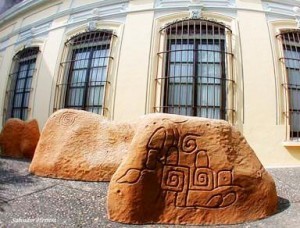By Sheila Madsen [updated April, 2024]
Fast Facts
Mazatlan means “place of the deer” in the old Nahuatl Indian language.
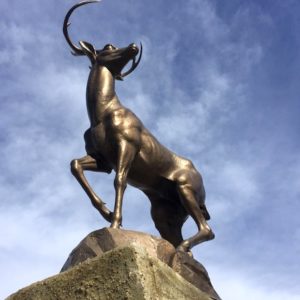
Photo courtesy of Museo de Arte.
1531: The official founding of Mazatlan but the city’s current location wasn’t inhabited until the late 18th century. The area was full of swamps and lacked drinking water. It was previously known as San Juan Bautista de Mazatlan, which now is Villa Union.
1700’s: The discovery of gold and silver in the Sierra Madre mountains initiated the foundation of mining cities like El Rosario, Concordia and Panuco. The wealth attracted many immigrants [and pirates and the jail too!].
1810: Mexico gained independence as a country, on September 16.
1817: Mazatlan becomes the main export route for gold and silver from mining cities nearby. New commerce laws allow trade with the British and Americans – previously all production was shipped to Spain. These shiny new objects attracted foreign immigrants to settle in Mazatlan.
1828: The Martime customs building is constructed in Mazatlan and the first American consulate opens its doors.
1847 -1848: Mexico was invaded by the U.S. and forfeited the territories of Texas and California
1830: The Filipino banker, Don Juan Nepomuceno Machado, arrived in Mazatlan and began trading with far-flung places such as The Philippines, Asia, Chile, Peru, Europe, and the US. With his financial success in Mazatlan he built and donated the Plazuela Machado. Machado also paid for the construction of the San Jose church, which was Mazatlan’s first religious building. Its construction started in 1837 and finished in 1842.
1859-1873: Mazatlan was the capital of Sinaloa. Around this period, the Germans landed bringing their Bavarian music, which is where Mazatlan got its banda bands from, and of course, the German staple, beer. Mazatlan had no beer and the Germans taught them all about brewing and they began producing the delicious Pacifico beer. Some historians claim the Germans with their skills and capital, shaped our port and made Mazatlan a prosperous city. Literally, put it on the map.[the founding fathers of the Pacifico Brewery were: Gernán Evers, Cesar Boelken, Federico Murberg, Jorge Claussen, Emilio Phillippi and the Melcher brothers.]
1861-1867: The French invaded Mexico. Mexico managed to crush the French and defeat them on May 5, (cinco de mayo)1862, known as the Battle of the Puebla. The defeat was short lived, the French returned and occupied Mexico from 1864 – 1867. In 1865 with the US Civil War over, the American troops helped the Mexicans banish the French.
1871: The last invasion of Mazatlan and Mexico was from England.
1883: 2,500 people died of yellow fever, including the famous opera singer, Angela Peralta. Mazatlan drank “water from the skies”; with no fresh water and only cisterns, viral infections transmitted by mosquitoes were common.
1902-1903: Mazatlan was hit by the bubonic plague and no one knew it was a plague. It wasn’t until a local doctor Martiniano Carvajal, quarantined those infected and then burned the houses of plague victims that the disease was conquered. In honour of his work, you can find a bust in the park in front of the Museo de Arte.
1910-1917: Mexican Revolution. Internal revolts, upheavals and battles for political power crisscrossed the entire country.
1922: One of the first English documented evidence of tourism in Mazatlan. The November issue of The National Geographic Magazine wrote a 56 page spread, with 45 photographs, titled “Adventuring Down The West Coast Of Mexico” by Herbert Corey. Corey refers to Mazatlan as “the city of parrots…Mazatlan is the Place Where the Deer Come Down to Drink, but it might well have been called the Place of the Girls…Nor can pretty girls have a more dainty setting. The residential district of the town is set along the half-moon of the Bay of Olas Altas, or High Waves, in which the rollers from China come to break upon the beach. This will be an important Pacific port when the works now in contemplation are completed. Then large ships can come in through the island portals that protect the entrance.”
Getting Ready.
Depending upon your walking speed and your level of interest, this is a two hour self- guided walking tour; you’ll be walking about a mile. Don’t leave home before 10 a.m. (stores don’t open until 11) and don’t leave home without: sunscreen, comfortable footwear, bottled water, hat, $13 pesos for the green/white bus each way, lots of small pesos for shopping in the market (they don’t take any credit cards) – and remember, look down at the sidewalk before you look up. The sidewalks of Centro have steep steps and “sudden endings” – literally, you should stop walking and then gaze down.
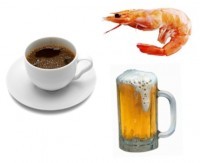 When you stroll through Centro Historico you’ll notice Mazatlan architecture is a portrait of Spanish, German, French and the British influences. It’s a combination of all these countries which inspired an historian to refer to the architectural style as “tropical neo-classical.” Other things to keep in mind are: the older the building the less decorated, and the newer the building the more ornate. Often the first storey was built by one country, time passed and another country would add a second storey; providing different details in designs, balconies (iron and wood), window frames, tiles and shutters. Much has changed since that 1922 National Geographic article on Mazatlan. The rollers still come in from China, the port did become important as predicted, but three major manufacturing industries emerged; coffee, beer, and shrimp. This gives Mazatlan the honour of being the only working town on the Pacific coast with a strong manufacturing infrastructure and a rich cultural and arts community.
When you stroll through Centro Historico you’ll notice Mazatlan architecture is a portrait of Spanish, German, French and the British influences. It’s a combination of all these countries which inspired an historian to refer to the architectural style as “tropical neo-classical.” Other things to keep in mind are: the older the building the less decorated, and the newer the building the more ornate. Often the first storey was built by one country, time passed and another country would add a second storey; providing different details in designs, balconies (iron and wood), window frames, tiles and shutters. Much has changed since that 1922 National Geographic article on Mazatlan. The rollers still come in from China, the port did become important as predicted, but three major manufacturing industries emerged; coffee, beer, and shrimp. This gives Mazatlan the honour of being the only working town on the Pacific coast with a strong manufacturing infrastructure and a rich cultural and arts community.
Today, Mazatlan has the added distinction of being the only Pacific coast city with an historical theatre – The Angela Peralta. During your time here you’ll see how warmly the hard working Mexicans treat visitors. That’s our secret weapon; the sheer sweetness and kindness of the Mazatlecos. You may encounter street beggars, they appear in various disguises: showing maimed limbs, sitting on street curbs, or often it’s a pretty eight year old girl selling flowers, and gum. You may also be asked to give to local re-hab centres. It is up to you, but my advice is to say “no gracias”. The city and business owners look after all these poor people in their own way.
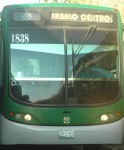 Now it’s time for you to stick out your hand and flag the green bus ( the bus could be white too – they’ve had a face-lift! As a matter of fact, they can be any color or covered with advertising.) The words stay the same: SABALO CENTRO, coming or going. There are a few formal bus stops, but mostly the bus will pick you up wherever you hail it.
Now it’s time for you to stick out your hand and flag the green bus ( the bus could be white too – they’ve had a face-lift! As a matter of fact, they can be any color or covered with advertising.) The words stay the same: SABALO CENTRO, coming or going. There are a few formal bus stops, but mostly the bus will pick you up wherever you hail it.
Walk this way
The Market, El Mercado, Jose Maria Pino Suarez Market
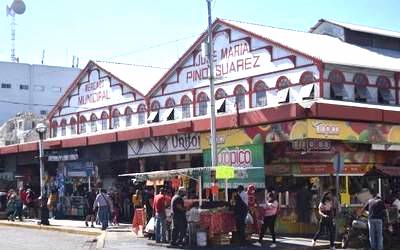
We assume you are in the Golden Zone and are going to flag the green/white [mostly green now] air conditioned bus that says Centro Sabalo. The cost is $13 (all prices quoted are in pesos.) The bus will let you off in front of the market. If you are already in Centro, then meet us at the market. The large market, formally known as José Maria Pino Suarez Market – it opened in 1899 with the name Manuel Romero Rubio and then the name changed in 1915 to José Maria Pino Suárez in honour of the vice-president of Mexico who was shot in 1913 – [it used to be a bullfight ring] has several entrances off Aquiles Serdan. Take the far left; you’ll see juice stands, vegetable and dairy stalls. As of May 2017, the market boast 260 stalls! We’ve chosen this entrance to avoid the rather sharp smells of the meat section where pig’s heads are proudly displayed along with other hanging meat. 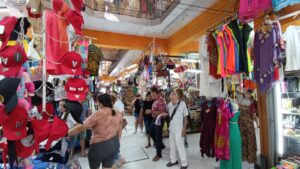
In 1900, this market was moved from the Town Hall Square/ Plaza Republica # 3, to this art nouveau style iron structure. There have been fires, floods and construction additions over the hundred plus years, so it’s really difficult to appreciate the lavish iron work. There is a second story packed with local restaurants [installed in 1952, it was previously a storage area. Now crews from the cruise ships like to buy food from the various stalls and cook for their friends in one of the restaurants] but we are going to skip those and have you walk straight through to the street called Benito Juarez. Just before you reach that street you’ll see a “tourist section” (to the left and to the right) with dresses, sandals, silver, jewellery, purses, blankets, pottery and t shirts. The tour won’t bring you back here, so if you fall in love with an item, buy it now. Have small pesos at the ready, and try to be fair in your bargaining.
The Cathedral, Cathedral Basilica de la Inmaculada Concepción

You’ll be standing on the busy street of Benito Juarez, and facing the fabric store Parisina. Stay on the market side of the street, turn left, cross Leandro Valle, and you’ll walk by the Panama Bakery (clean restrooms), and past the department store Liverpool (clean restrooms on the 3rd floor.) This is an extremely congested area with local buses, tour buses, pulmonias, mums with strollers, dogs, and often beggars sitting on the sidewalk. There is nothing to see in this stretch so stay focused on what’s happening around you. To your right ,you’ll see the spires of the Cathedral. Before you cross observe the six windows facing you. Look closely and you’ll notice the Star of David – there’s a total of 28 Star of David’s, the world’s only Roman Catholic Church to display the Star of David. Be careful crossing Jose Maria Canizales; don’t assume a bus, a bicycle or a car will ever stop for a pedestrian. The building of the Cathedral took place in stages: 1856 until 1899. It’s very proud of their fine organ, believed to have been built in Paris, and played for the first time in 1899. [Unfortunately, the organ is not used today as the upkeep is so costly mostly due Mazatlan’s very humid summers.] Exterior and interior restoration is an on-going process, but today you can admire the gothic and baroque three naves, the main altar and side altars murals from 1942, and the large chandelier over the main altar made from the Italian marble, from the 1950’s. Like any Mexican city our Cathedral represents a strong ecclesiastical and economic power. Hence the Stars of David – economic help from the Jewish community for further decorations and ironically, there is no synagogue today in Mazatlan. Think about it: the population of Mazatlan in the late 1800’s was about 14,000, yet the town had this grand Cathedral to worship and meet in. At the end of the 19th century the population was 17,000.

Town Hall Square, Plaza Republicá
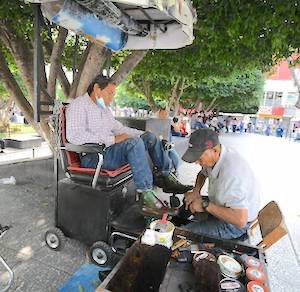
Across the street is the Town Hall Square, which was the old market. You’ll see many shoe shine stalls surrounding the 1909 kiosk. This is where we bring all our shoe and purse repairs; it’s inexpensive, fast and top quality. The City Hall building in 1857, and if you go through the main gates and up the stairs there are two interesting murals depicting Mazatlan’s Bicentennial (1810-2010) and the 1910 Revolution of Sinaloa painted by Aarón Zamudio. These are typically vivid scenes of religion, war generals, political struggles and eventually peace.
The Medrano Building/Curado Art Gallery
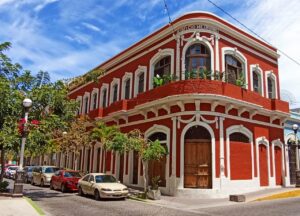 Back on the square, turn left and walk along Angles Flores. When you see the bright red Santander Bank sign, you’ll cross and begin walking down Carnaval, you’ll be opposite a new four-storey parking house with stores on street level. Keep going and cross Mariano Escobedo; cross over [opposite Intercam Bank] and look at the aging, but newly renovated, Medrano Building which houses the art gallery “Curado”. Curado’s hours vary but if it’s open, be sure to go in the look up and then look at the art that hand on the old untouched walls.
Back on the square, turn left and walk along Angles Flores. When you see the bright red Santander Bank sign, you’ll cross and begin walking down Carnaval, you’ll be opposite a new four-storey parking house with stores on street level. Keep going and cross Mariano Escobedo; cross over [opposite Intercam Bank] and look at the aging, but newly renovated, Medrano Building which houses the art gallery “Curado”. Curado’s hours vary but if it’s open, be sure to go in the look up and then look at the art that hand on the old untouched walls.
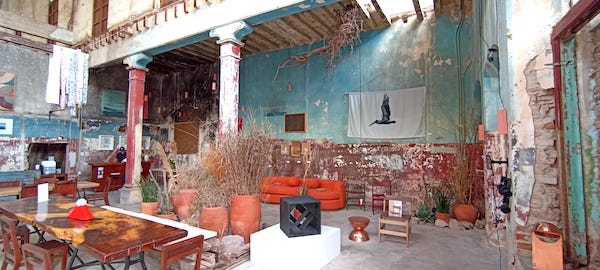
It’s just been given a fresh coat of red[ish] paint. It’s pie shape entrance on two corners indicates wealth; an inefficient and expensive entrance. This was an elegant structure built in the late 1910’s, you can still see garland ornamentations around the windows.
Rafael Lizarraga House and Juarez Building
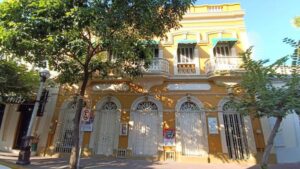
Rafael Lizarraga House
Cross Carnaval again to the side of the Medrano building and just before you reach the Plazuela Machado you’ll notice a long yellow two story building, the house of Rafael Lizarraga. This is also from 1910 with individual balconies, unusual for that period. This property was built by the mezcal producer, Rafael Lizarrage. He was the owner of the mezcal factory in La Noria, which allowed him to accumulate a considerable fortune.
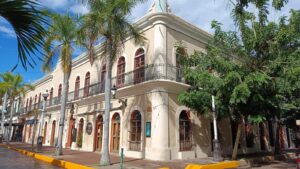
Juarez Building
Today, the popular restaurant Pedro y Lola’s occupies the space, but in 1830 there was a hospital, conveniently close for business men who regularly met in the square in the 1830’s.
The Imprenta Building
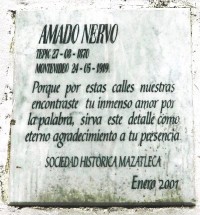 You are now at the edge of the Plaza Machado on the corner of Carnaval and Constitution. Look up and there’s the Imprenta (printing) Building built by the owner, Manuel M. Retes, of the local newspaper and dedicated to the reporter and poet Amado Nervo. Amado was also known as Juan Crisóstomo Ruiz de Nervo and was the Mexican Ambassador to Argentina and Uruguay. Nervo was one of Mexico’s most beloved and important poets; while in Mazatlan he worked as a reporter for El Correo de la Tarde (The Evening Mail) and it was first published in this building in 1885. The newspaper had a critical editorial line and represented views of local businesses leaders. Imagine 1840 in the square. No Wi-Fi but you could take a mining meeting, buy a newspaper hot off the press and check yourself into the hospital.
You are now at the edge of the Plaza Machado on the corner of Carnaval and Constitution. Look up and there’s the Imprenta (printing) Building built by the owner, Manuel M. Retes, of the local newspaper and dedicated to the reporter and poet Amado Nervo. Amado was also known as Juan Crisóstomo Ruiz de Nervo and was the Mexican Ambassador to Argentina and Uruguay. Nervo was one of Mexico’s most beloved and important poets; while in Mazatlan he worked as a reporter for El Correo de la Tarde (The Evening Mail) and it was first published in this building in 1885. The newspaper had a critical editorial line and represented views of local businesses leaders. Imagine 1840 in the square. No Wi-Fi but you could take a mining meeting, buy a newspaper hot off the press and check yourself into the hospital.
The Angela Peralta Theatre
 Stop! Don’t go right, we aren’t going into the square yet, we are following Carnaval along to the Angela Peralta Theatre. Running adjacent to the theatre is the Fine Arts Municipal Center that houses the music and dance school. The ground floor dates from 1840, and in 2011 the school expanded along Constitution. Not much to see, but you may hear the music students practicing. The Angela Peralta Theater is Mazatlan’s oldest operating theatre. It’s all been refurbished with state- of -the- art acoustics, new comfy red seats which are arranged in a classic U shaped formation with three tiered levels still graced by Italian-style wrought iron balconies and railings. The Angela Peralta has a vibrant history and was rescued just in time!
Stop! Don’t go right, we aren’t going into the square yet, we are following Carnaval along to the Angela Peralta Theatre. Running adjacent to the theatre is the Fine Arts Municipal Center that houses the music and dance school. The ground floor dates from 1840, and in 2011 the school expanded along Constitution. Not much to see, but you may hear the music students practicing. The Angela Peralta Theater is Mazatlan’s oldest operating theatre. It’s all been refurbished with state- of -the- art acoustics, new comfy red seats which are arranged in a classic U shaped formation with three tiered levels still graced by Italian-style wrought iron balconies and railings. The Angela Peralta has a vibrant history and was rescued just in time! 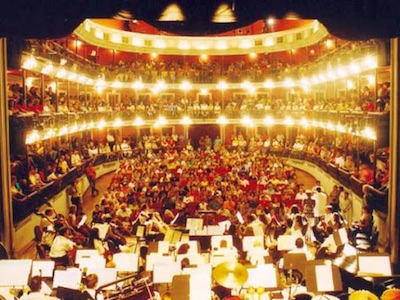 Construction began in 1869, and in 1874 it was known as the Teatro Rubio – the columns you see outside are the only remaining pieces from the original architecture. Ownership changed again in 1880 and in 1883 the famous opera singer from Mexico City, Angela Peralta arrived from La Paz to perform. Sadly, the singer also brought with her yellow fever and “The Mexican Nightingale” died before ever performing on stage. In 1943 the city renamed it the Angela Peralta Theater and that name was kept when the restoration began in 1988 and finally re-opened in 1992. With the economic ups and downs not to mention the Mexican Revolution the theater was home to a cinema, then a repair shop for pulmonias in the 60s, and it ended its days as a burlesque theater – then hurricane Olivia blew in and left it barely standing. It was dark from 1978 until 1992.
Construction began in 1869, and in 1874 it was known as the Teatro Rubio – the columns you see outside are the only remaining pieces from the original architecture. Ownership changed again in 1880 and in 1883 the famous opera singer from Mexico City, Angela Peralta arrived from La Paz to perform. Sadly, the singer also brought with her yellow fever and “The Mexican Nightingale” died before ever performing on stage. In 1943 the city renamed it the Angela Peralta Theater and that name was kept when the restoration began in 1988 and finally re-opened in 1992. With the economic ups and downs not to mention the Mexican Revolution the theater was home to a cinema, then a repair shop for pulmonias in the 60s, and it ended its days as a burlesque theater – then hurricane Olivia blew in and left it barely standing. It was dark from 1978 until 1992.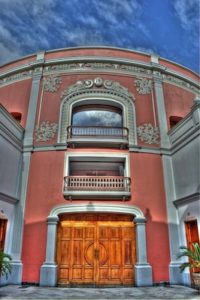
When the construction was completed the building allocated space for the award-winning Delfos Contemporary Dance company, an art school, Centro Municipal de las Artes , and running along Constitución is the music school which has produced world -famous opera singers such as baritone Adán Pérez [now in New York] tenor Carlos Osuna [now in Vienna] and is home to Camerata Mazatlan. The building has two art galleries both with revolving exhibits – The Galeria is upstairs and the Galeria Rubio is at street level. Today, the theater supports the local art, music and ballet schools as well as inviting famous professional drama groups, opera companies and ballet companies. It hosts an annual jazz festival too. The theater is cultural heart of Mazatlan; it’s where the audience has an opportunity to see world-class performances. Imagine seeing La Boheme , Madame Butterfly, Swan Lake, Corky Siegel, or a Broadway star-studded production for as little as $200 pesos. [there are clean restrooms on the ground floor of the theater,]
Plazuela Machado and the Portales de Canobbio
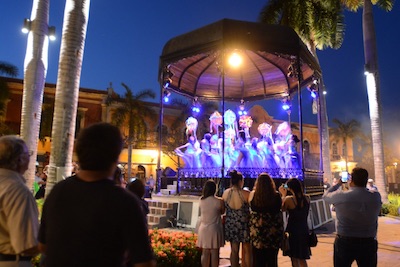
In 1853 the Philippine merchant, Juan Nepomuceno Machado, donated the land to the city, the “square” construction was completed in 1864 and kiosk/ bandstand was finished in 1881. It was completely restored in 2010. The music pavilion has been a space for every type of music – opera singers, banda, troubadours, jazz, tribute bands like the Beatles, hip hop, African dance, and even good old rock ‘n roll. The music has died occasionally for such drastic events as a war, yellow fever, and our most recent tragedy, the coronavirus.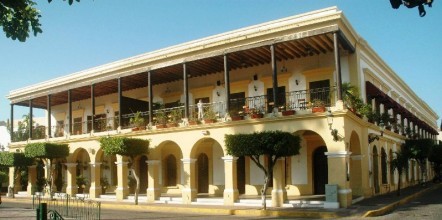
Walking through the Plazuela Machado you’ll see on the west side, Heriberto Frias, the arcade known as Portales de Canobbio.The Machado brothers built it around 1840, then sold it to Tomasa Osuna who named it Portales de la Lonja, then Luis Canobbio bought it in 1899. Luis Canobbio was an Italian pharmacist and established one of Mazatlan’s largest pharmacies called la Botica Italiana. Part of his fortune is attributed to his elixir, “the goddess Venus”, which promised eternal youth. I think today that elixir would be called wine. The entire Machado was recently restored in April 2015 – new benches, pretty gardens, and all new lighting. There are not only graceful palm trees lining the square but also golden rain trees, which in the spring do indeed bloom long golden rods.
The German Notions Store Building
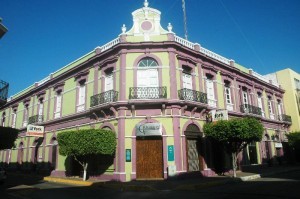 Leaving the porticos you’ll continue walking along Constitucion and make a right turn on Belisario Dominguez, walking two short blocks and you’ll see a large building on the corner of Mariano Escobedo and Belisario Dominguez. No need to cross, you can’t get in it, but this is the 1904 German Notions Store Building. At the time it was a huge dry goods emporium selling everything from pianos to typewriters.
Leaving the porticos you’ll continue walking along Constitucion and make a right turn on Belisario Dominguez, walking two short blocks and you’ll see a large building on the corner of Mariano Escobedo and Belisario Dominguez. No need to cross, you can’t get in it, but this is the 1904 German Notions Store Building. At the time it was a huge dry goods emporium selling everything from pianos to typewriters.
The Reynaud Building
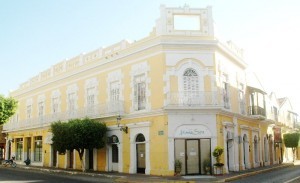 You are still on the right side of Belisario Dominguez (east) and now you’ll cross Mariano Escobedo and you’ll face the impressive yellow and white, Reynaud Building. Dating from 1847, once an office to a powerful French merchant, who declared bankruptcy in 1900, it was then bought by Luis Reynaud. He was also French, and the French Consul in Mazatlan for years, as well as being a prestigious and wealthy merchant who constructed the two buildings in 1904. Now owned by a Canadian, this structure has been lovingly restored and transformed into Héctor’s Bistro
You are still on the right side of Belisario Dominguez (east) and now you’ll cross Mariano Escobedo and you’ll face the impressive yellow and white, Reynaud Building. Dating from 1847, once an office to a powerful French merchant, who declared bankruptcy in 1900, it was then bought by Luis Reynaud. He was also French, and the French Consul in Mazatlan for years, as well as being a prestigious and wealthy merchant who constructed the two buildings in 1904. Now owned by a Canadian, this structure has been lovingly restored and transformed into Héctor’s Bistro  /Via Condotti./Alto Fuego. Clean bathrooms inside Via Condotti, open every day at 8 am. Outside, you’ll notice greater importance has been given to the second storey; they have elaborate tiled window frames, and the balconies are made of wood, a rarity in a city building.
/Via Condotti./Alto Fuego. Clean bathrooms inside Via Condotti, open every day at 8 am. Outside, you’ll notice greater importance has been given to the second storey; they have elaborate tiled window frames, and the balconies are made of wood, a rarity in a city building.
Garcia House, Casa Garcia, or Garcia Mansion
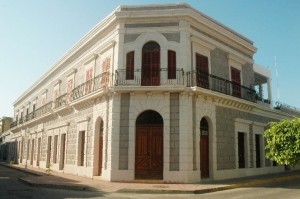 Cross Belisario Dominguez, walk on left side (west), and turn right on the first street, Mariano Escobedo. Proceed along Mariano Escobedo, and turn left on the next corner, Niňos Heros. #1511 is the Garcia House and this structure dates from 1876. Multiple owners, Germans and Spanish used this magnificent house for various trading activities. Today, a prominent Mazatleco family has restored the entire inside and opened two restaurants, El Presidio and the upscale Cantina, Compañia Minera. Both are open every day from 1 p.m. on. If you would like to learn more about the history of Casa Garcia, please click here.
Cross Belisario Dominguez, walk on left side (west), and turn right on the first street, Mariano Escobedo. Proceed along Mariano Escobedo, and turn left on the next corner, Niňos Heros. #1511 is the Garcia House and this structure dates from 1876. Multiple owners, Germans and Spanish used this magnificent house for various trading activities. Today, a prominent Mazatleco family has restored the entire inside and opened two restaurants, El Presidio and the upscale Cantina, Compañia Minera. Both are open every day from 1 p.m. on. If you would like to learn more about the history of Casa Garcia, please click here.
Museo Arqueologico de Mazatlan, The Archaeological Museum
Continue walking south on Niňos Heros (you’ll pass The Melville Hotel, 1880, cross Constitucion and walk for another block and turn right onto Sixto Osuna. Proceed down Sixto Osuna (west towards the ocean), cross Venus, and on the right side (north) you’ll encounter Museo Arqueologico de Mazatlan just behind the three petroglyphs displayed outside. Only one is real, can you spot it? The Archaeological Museum is open from Tuesdays to Sundays, 10 am. – 5 p.m with various special exhibits. A small peso fee may be charged, $75, clean restrooms.
Museo de Arte, The Museum of Art
 Now you are facing a small cobblestone boulevard dotted with black olive and laurel trees. Walk along and to your left is the entrance to the Museo de Arte, opposite the pub Macaws. This imposing and beautiful one storey building is from 1896, and served as the headquarters of the Hidalgo family. The family owned hardware stores, construction supplies, and were important ship owners. There are three galleries: the permanent collection is in the Sala Antonio López Sáenz. The first revolving exhibit gallery is Sala Roberto Perez Rubio, and second exhibit gallery, across the courtyard with the ancient banyan tree, to the left, is Sala Carlos Bueno. The exhibits are all free, and are usually varied and thought provoking. The museum supports local talent as well as sculptors, photographers and interesting art installations from around the world. Hours are from 10 a.m. to 5 p.m. Tuesday to Sunday.
Now you are facing a small cobblestone boulevard dotted with black olive and laurel trees. Walk along and to your left is the entrance to the Museo de Arte, opposite the pub Macaws. This imposing and beautiful one storey building is from 1896, and served as the headquarters of the Hidalgo family. The family owned hardware stores, construction supplies, and were important ship owners. There are three galleries: the permanent collection is in the Sala Antonio López Sáenz. The first revolving exhibit gallery is Sala Roberto Perez Rubio, and second exhibit gallery, across the courtyard with the ancient banyan tree, to the left, is Sala Carlos Bueno. The exhibits are all free, and are usually varied and thought provoking. The museum supports local talent as well as sculptors, photographers and interesting art installations from around the world. Hours are from 10 a.m. to 5 p.m. Tuesday to Sunday.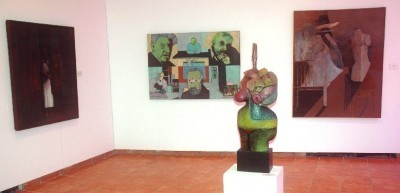
The Freeman Hotel/Best Western
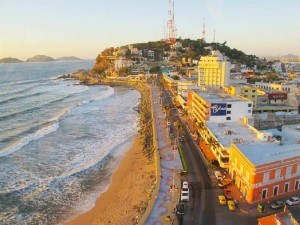 Smell the sea? Still on Sixto Osuna, you walk west and pass the Oxxo store on the corner. You are ending your walking tour with the best view of Mazatlan. You are now officially on Olas Altas (high waves) or the Malecon (our four mile boardwalk to Valentino’s in the Golden Zone), cross over and you’ll see The Freeman Hotel, with a Best Western logo. In 1940, this was Mazatlan’s first skyscraper. Take the elevator to the 9th floor, (clean restrooms) walk up two flights of stairs and a 360 degree view awaits you on their roof top bar. Be kind and buy a drink to support the Freeman’s light, and electricity bills and soak up this first class view. Some suggest the landscape is “the Tropic of Cancer meeting the Mexican Riveria.” You decide what your Mazatlan is. When you depart the Freeman, [the buses no longer run on Olas Altas] return to the market and flag the same green/white bus and you are on your way home. The white buses [more run down] are about 10 pesos and the green buses are about $13 pesos.
Smell the sea? Still on Sixto Osuna, you walk west and pass the Oxxo store on the corner. You are ending your walking tour with the best view of Mazatlan. You are now officially on Olas Altas (high waves) or the Malecon (our four mile boardwalk to Valentino’s in the Golden Zone), cross over and you’ll see The Freeman Hotel, with a Best Western logo. In 1940, this was Mazatlan’s first skyscraper. Take the elevator to the 9th floor, (clean restrooms) walk up two flights of stairs and a 360 degree view awaits you on their roof top bar. Be kind and buy a drink to support the Freeman’s light, and electricity bills and soak up this first class view. Some suggest the landscape is “the Tropic of Cancer meeting the Mexican Riveria.” You decide what your Mazatlan is. When you depart the Freeman, [the buses no longer run on Olas Altas] return to the market and flag the same green/white bus and you are on your way home. The white buses [more run down] are about 10 pesos and the green buses are about $13 pesos.
Shopping on the side streets
If you have time and want to squeeze in more shopping here are a few suggestions. Some open at 10:00 am., others at 11:00 am.
The Art Shop “handmade crafts and jewelery” – both are located in two locations a block from each other on Carnaval. One is across from the Angela Peralta Theatre, the other beside the Legado Zapoteco , The Art Shop Boutique, both open at 10 am. To read more about both shops, please click here.
Legado Zapoteco/The Oaxaca Shop, Carnaval #1313 – artisan homemade/handmade unique gifts from Oaxaca – bedspreads, wool rugs, table cloths, runner, napkins, alebrijes, and “black mud” pottery. Open every day from 10 a.m. to 8 p.m., accepts credit cards. 669 319 1061. To read more about this Oaxaca tradition please click here.
Gandarava Galeria, Constitución # 616, closed Sundays, large selection of hand made Mexican crafts, closed Sundays
Nidart, Libertad #45 pottery and leather masks, closed Sundays, open Monday to Friday from 10 a.m. to 6 p.m. and on Saturdays from 10 a.m. to 2 p.m.
Casa Etnika, on Benito Juarez #1218 – great clothes, gifts, furniture, jewellery, the perfect stop for your “suitcase” present. Closed Sundays, open from 10 am. to 6 pm.
Salty Feet, Sixto Osuna #15 [beside Tippy Toes Salon],closed Sundays, open from 10 am to 6 pm. “Salty Feet offers more than art; it’s a treasure trove! Taste exquisite virgin raw wildflower honey. Shop for organic soap from Chihuahua, Mexico. Experience the rich flavors of coffee from Coatepec, Mexico’s oldest coffee town, and discover unique tribal jewelry from Afghanistan. And don’t forget to check out the fun t-shirt line from Mazátlan!” To read more about Salty Feet, please click here.
La Machadito, Sixto Osuna #24 – jewelry, purses, art, ++, closed Sundays, open from 10 am. to 6 pm.
Tonantzin – the Godess of hand crafted wellness, products, Canizalez, #508, Closed Sundays, open from 10 am. to 4 pm. Please click here for more details.

